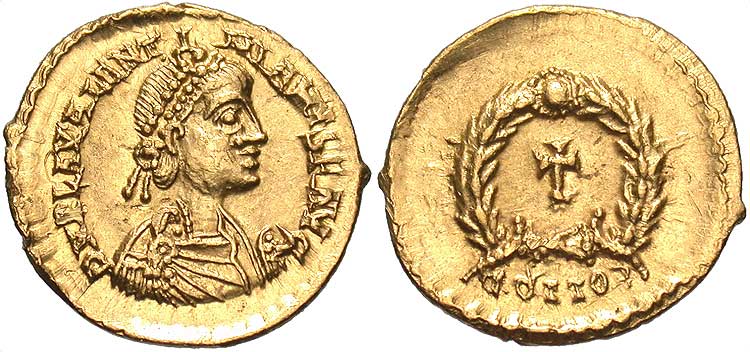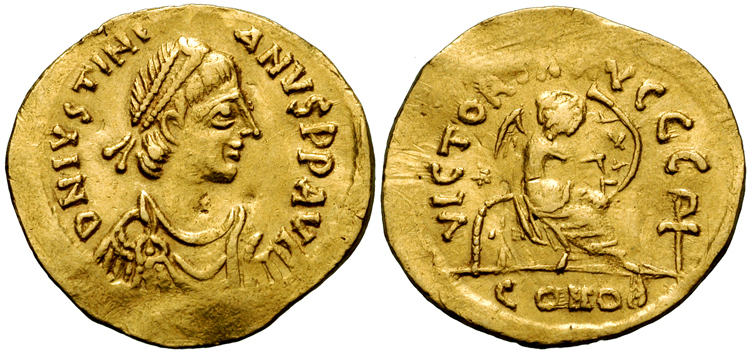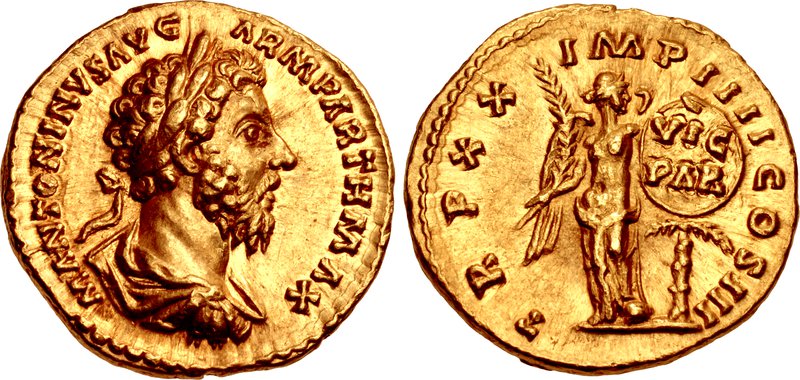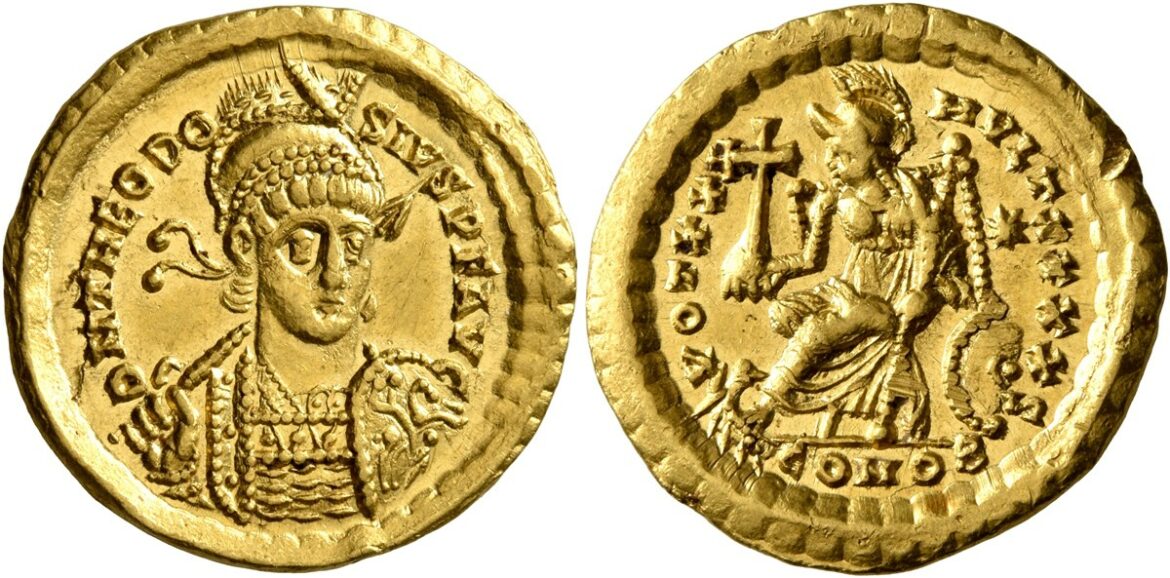The Roman Empire, an iconic civilization that thrived from 27 B.C. to A.D. 476, continues to awe and inspire historians, scholars, and enthusiasts worldwide. Among the numerous elements that marked the Roman era, the coinage system offers an intriguing glimpse into the empire’s economics, politics, religion, and culture. Among these diverse coins, the Roman gold coins, or Aurei, stand as one of the most highly sought-after collectibles and relics of the past. What are the best Roman gold coins?
Gold, known for its innate value and beauty, was the perfect medium to display the wealth and power of Rome. Not only did the gold coins serve as a means of commerce, but they also were powerful propaganda tools that communicated the strength and stability of the empire. A gold coin with an emperor’s face was a tangible and mobile way to project imperial authority and achievements.
In this article, we will delve into the world of Roman gold coins, providing an introduction to their history, significance, and variety. From the legendary Aureus and Solidus to the less known but equally fascinating Semissis and Tremissis, we will journey through the splendid legacy that these coins have left behind.
Whether you’re a novice collector interested in ancient numismatics, a history buff fascinated by the Roman Empire, or a seasoned expert in antique coins, there’s something intriguing to discover in the realm of Roman gold coins. So, brace yourself for a trip back in time, where gold wasn’t just a means of exchange, but a canvas for emperors, capturing pivotal moments of history and offering a narrative of Roman might, religion, and iconography.
Through this journey, we will come to realize that these Roman gold coins are more than just precious antiques. They are brilliant vestiges of a storied past that continue to provide unparalleled insights into one of the world’s greatest civilizations. This understanding further accentuates the intrinsic and historical value that these coins carry, transcending time and place. Join us as we explore the captivating realm of Roman gold coins, understanding their timeless allure and unique place in the annals of history.
Tremissis
The Tremissis was a gold coin used during the late Roman Empire and into the Byzantine era. It was introduced in the 4th century AD, during the reign of Emperor Constantine I, who had revised the coinage system and introduced the Solidus as the new gold coin. The Tremissis was worth one-third of a Solidus.

Due to its lower value, the Tremissis was commonly used in everyday transactions. This coin was roughly 14-16mm in diameter and weighed about 1.5 grams, making it one of the smallest coins in circulation during this era.
The design of the Tremissis generally followed that of the Solidus, with a portrait of the reigning emperor or empress on the obverse (front) and various designs, often symbolic or religious, on the reverse.
The use of the Tremissis extended beyond the fall of the Western Roman Empire in 476 AD. It was extensively minted and used in the Byzantine Empire and by the Germanic kingdoms that succeeded Rome in the West. In the Byzantine Empire, the Tremissis was eventually phased out in the 7th century AD, replaced by a new gold coin, the Nomisma.
For collectors, the Tremissis offers a wide range of styles and designs due to the length of time it was in circulation and the number of different powers that minted it. Their value can vary significantly depending on factors like the era and location they were minted, the condition of the coin, and the historical significance of the specific coin.
Semissis
The Semissis was a gold coin used in the Roman Empire and its subsequent Eastern Roman (Byzantine) Empire. The word “Semissis” means “half” in Latin, as it was valued at half a Solidus, which was the primary gold coin used in the Roman Empire following its introduction by Constantine the Great in the 4th century AD.

Typically, a Semissis weighed about 2.25 grams. Its design was similar to other Roman and Byzantine coins. On the obverse, or front, the Semissis usually featured a bust of the reigning emperor. The reverse often showed traditional Roman or Byzantine motifs, such as Victory, the goddess of victory, or other symbols reflecting the culture, religion, or political climate of the era.
Despite being less valuable and smaller than a Solidus, the Semissis is prized by numismatists (coin collectors) for its craftsmanship and the historical insight it offers. It is also interesting because it was used during a period of significant transition and change in the Roman world.
As with the Solidus and other smaller denomination coins like the Tremissis, the Semissis continued to be minted and used even after the fall of the Western Roman Empire in the 5th century AD. However, its usage began to decline from the 7th century AD onward in the Byzantine Empire, as the Byzantines began to mint lighter gold coins.
The value of a Semissis today can depend on a number of factors, including its condition, the era and location in which it was minted, the historical significance of the figure depicted, and its rarity. Before investing in ancient coins such as the Semissis, it is always advisable to seek advice from a numismatic expert or do thorough research.
Aureus of Julius Caesar
The Aureus of Julius Caesar is a highly coveted and significant coin for numismatists (coin collectors) and historians alike. This is not only due to its gold content but also its historical significance, as Julius Caesar was a pivotal figure in the transformation of the Roman Republic into the Roman Empire.

Julius Caesar’s aurei were minted during his reign from 49 to 44 BC, a period marked by civil war and political upheaval. Despite this, these coins are renowned for their high-quality engraving and the artistry involved in their creation.
The obverse (front) of a Julius Caesar Aureus typically features a portrait of Caesar himself. This was a significant departure from previous tradition, as living figures were rarely depicted on Roman coins before this. Caesar’s decision to place his own image on the coins was a clear assertion of his unrivaled power and status.
The reverse (back) of these coins often depicted Venus, the Roman goddess of love and beauty. Caesar claimed to be a direct descendant of Venus through the Julii family line. This connection to Venus was used to bolster his divine authority and legitimacy as a leader. Some coins might feature symbols or scenes associated with Caesar’s military victories, emphasizing his prowess as a military leader.
The value of an Aureus of Julius Caesar today would be based on its condition, its rarity, and the particular variant of the coin. As with any ancient coin, provenance and authenticity are also crucial factors in determining value. Such a coin can fetch high prices at auction due to its historical significance and the popularity of Caesar as a figure in Roman history. If you’re considering purchasing or investing in such a coin, it’s advisable to consult with a numismatic expert or a reputable coin dealer.
Aureus of Nero
The Aureus of Nero is another highly significant coin in Roman numismatics. Nero reigned as Roman Emperor from 54 AD to 68 AD, and he was the last emperor of the Julio-Claudian dynasty. His reign was marked by significant events such as the Great Fire of Rome in 64 AD, and his lavish lifestyle and artistic pursuits were famous. Nero is also known for his persecution of Christians, as mentioned in biblical accounts.

The Aureus minted under Nero’s rule typically featured a portrait of Nero himself on the obverse (front) side of the coin. The depiction of Nero changes as he ages, which provides a fascinating historical record. Some of these coins show a young Nero, as he became emperor at just 17 years old.
The reverse (back) side of Nero’s Aureus often depicted various gods, goddesses, or symbolic scenes. One particularly interesting feature of some of Nero’s coins is the depiction of architectural structures. For instance, some Aurei feature the façade of the “Domus Aurea” (Golden House), Nero’s grand palace in Rome.
Like other ancient coins, the value of an Aureus of Nero today would be determined based on its condition, rarity, and the particular variant of the coin. The coins’ provenance and authenticity also play a vital role in its valuation. Because of Nero’s notoriety and the significant historical events during his reign, Aurei of Nero can be quite valuable and highly sought after by collectors and historians.
As with any ancient coin, if you’re considering purchasing or investing in an Aureus of Nero, it would be wise to consult with a numismatic expert or a reputable coin dealer to ensure its authenticity and understand its true value.
Aureus of Marcus Aurelius
The Aureus of Marcus Aurelius is another highly sought-after coin due to its historical significance and the high regard in which this emperor is held. Marcus Aurelius reigned as Roman Emperor from 161 AD to 180 AD and is often remembered as the last of the “Five Good Emperors.” He is also known for his writings on Stoic philosophy, known as the “Meditations.”

The obverse (front) of Marcus Aurelius’s Aureus typically features a realistic and detailed portrait of the emperor. This portrait evolved over time, reflecting the aging emperor and his growing beard, a symbol of his philosophical leanings.
The reverse (back) of these coins often featured depictions of various gods, goddesses, or symbolic scenes, which were common themes for Roman coinage. Some coins might also include scenes from Marcus Aurelius’s military campaigns, particularly against the Germanic tribes.
In terms of numismatic value, an Aureus of Marcus Aurelius could be quite valuable, depending on factors such as condition, rarity, and historical significance of the specific coin variant. For instance, an Aureus commemorating a significant military victory would likely be more valuable than a more common variant.
As with other ancient coins, it’s critical to ensure the authenticity of an Aureus of Marcus Aurelius. This can be done by consulting with a numismatic expert or purchasing from a reputable coin dealer. These coins are a popular target for counterfeiters due to their historical significance and potential value, so due diligence is essential when purchasing or investing in these coins.
Solidus of Constantine the Great
The Solidus of Constantine the Great is an important coin in the world of numismatics due to the significant role that Constantine played in the history of the Roman Empire. Constantine the Great, also known as Constantine I, reigned from 306 AD to 337 AD. He is most notable for legalizing Christianity throughout the empire with the Edict of Milan in 313 AD, effectively ending the widespread persecution of Christians.

The Solidus was introduced by Constantine as a replacement for the Aureus and became the primary gold coin of the Roman Empire. Each Solidus weighed about 4.5 grams.
The obverse (front) of Constantine’s Solidus often displayed a portrait of the emperor. Like other emperors, the design of Constantine’s portrait evolved over time, reflecting his aging process and changes in his status, such as his transition from Caesar to Augustus.
The reverse (back) side of the coin varied in design. Some coins showed depictions of Roman deities or symbolic scenes representing military victories or religious themes. Others featured Christian symbols, like the chi-rho, especially in coins minted later in Constantine’s reign, reflecting his adoption of Christianity.
The value of a Solidus of Constantine the Great today would be based on factors such as the condition of the coin, its rarity, and the historical significance of the specific variant. Provenance and authenticity are also key considerations when valuing these coins. Due to Constantine’s pivotal role in history, coins from his reign can be quite valuable to collectors and historians.
Conclusion
In our exploration of the best Roman gold coins, we’ve journeyed through the legacy of the Roman Empire, a civilization that left an indelible mark on the course of human history. These coins, each a precious artifact in its own right, offer more than just their weight in gold. They offer a portal into the past, a tactile representation of an era defined by power, culture, and innovation.
Through the Aureus, we saw the vast reach of the empire and its emperors, each coin bearing the likeness of the ruler and, oftentimes, showcasing significant military victories or state ideologies. The Solidus introduced us to a time of monetary reform, underlining the stability and standardization that characterized the Late Roman Empire. Lastly, the Semissis and Tremissis, although lesser-known, were key to understanding the evolving dynamics of the empire’s economy and the subtle transition to the Byzantine era.
It’s important to note that the value of these coins extends beyond the numismatic sphere. To historians, they offer a nuanced understanding of the political, economic, and social landscape of the Roman Empire. To art enthusiasts, they demonstrate the artistic abilities of ancient craftsmen. To the casual observer, they provoke awe and curiosity about a time long past yet still resonating in the foundations of the modern world.
Let’s conclude with a summary table highlighting the key characteristics and historical context of each coin:
| Coin | Introduced By | Era | Notable Features |
|---|---|---|---|
| Aureus | Julius Caesar | Early Roman Empire | High gold content, images of emperors or divine entities, often included inscriptions of significant events or ideologies |
| Solidus | Constantine I | Late Roman Empire | Lower gold content than the Aureus, standardized weight, continued the tradition of bearing the emperor’s portrait |
| Semissis | Several emperors | Late Roman Empire | Half the weight of a Solidus, used for smaller transactions, often had imperial or religious imagery |
| Tremissis | Several emperors | Late Roman Empire to Early Byzantine | One-third the weight of a Solidus, played a crucial role in everyday transactions, commonly used well into the Byzantine era |
These Roman gold coins stand as testament to a civilization’s grandeur and complexity. They truly are, in every sense, brilliant vestiges of a storied past.
